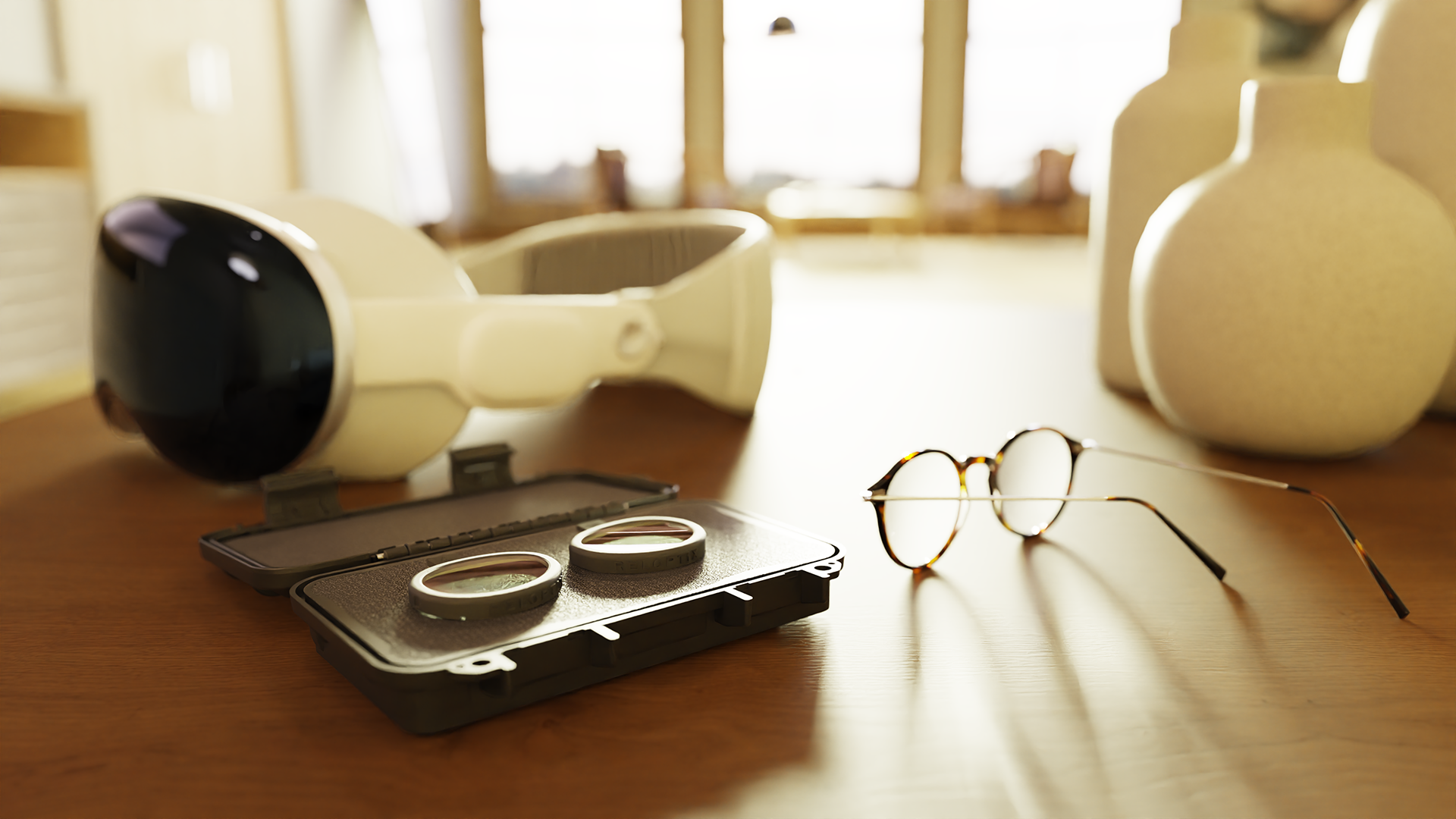As virtual reality becomes more immersive and widespread, more users are discovering that sharp vision is key to a great virtual reality (VR) experience. But with a growing number of “adjustable glasses” being marketed for VR, it's important to understand what these devices can and can’t do, especially compared to personalized vision correction.
Adjustable lenses have been around for some time in various products. As an optician, I always pay attention to technologies that have potential to enhance my client’s lifestyles. Here I’ll explain how your prescription is determined, how adjustable lens glasses work, and why the current adjustable lens technology is not appropriate for most VR users needing vision correction.
How Optometrists Determine Your Prescription: It's More Than Just Focus
When you get your eyes tested, your optometrist uses a device called a phoropter—a complex tool designed to measure both spherical and cylindrical errors in your vision.
-
Spherical correction fixes nearsightedness or farsightedness.
-
Cylindrical correction addresses astigmatism, a condition caused by an uneven curvature of the eye that results in blurred or distorted vision.
-
The axis indicates the direction of the astigmatism and is equally important for clear, focused vision.
This process is detailed and individualized. The resulting prescription includes specific values for sphere, cylinder, and axis. Simply correcting the spherical component isn’t enough for many people—especially in high-resolution, immersive environments like VR.
How Do Adjustable Glasses Work?
Adjustable eyeglasses are designed to allow users to manually change the spherical power of each lens. The most common types include:
-
Fluid-filled lenses: These use a flexible membrane that changes curvature as fluid is pumped in or out.
-
Sliding lens (Alvarez) systems: Two lens plates slide over one another to change the focus.
Both types aim to replace multiple pairs of reading or distance glasses by offering a range of focal powers. This can be a useful tool in emergencies, low-resource settings, or as a backup—especially for users with mild, spherical-only prescriptions. However, they only correct spherical errors. Adjustable glasses do not correct astigmatism, nor do they accommodate axis-specific adjustments.
Precise vision correction is essential in VR. Without it, VR users may experience blurred images, double vision, eye strain, or headaches. At Reloptix 30,700 out of 31,000 of our orders require a correction for astigmatism. It really is very rare to find a sphere-only prescription. Current adjustable lens technology is not appropriate for the vast majority of our customers.
Will adjustable lenses correct astigmatism in the future?
An optometrist’s phoroptor has up to 14 spherical lenses and 6 cylindrical lenses for each eye. Mechanically moving these lenses allows the optometrist to find the correct prescription. There’s ongoing research into advanced adjustable lenses that can combine the phoroptor’s full range of lenses into a single adjustable lens. These advanced lenses will make both spherical and cylindrical corrections, allowing the lenses to correct for astigmatism. At Reloptix, we closely monitor these developing technologies. The potential is exciting—but the reality today is that these lenses are still too bulky to be integrated into compact consumer products like VR headsets. State-of-the-art phoropters are 70% smaller and lighter than standard phoropters, but they are still too big to use with a VR headset. Once the adjustable lens technology can replace the full range of phoropter lenses in a single, compact, lightweight, easy-to-use lens, it will be a game changer for VR vision correction. Until then, Reloptix will continue providing the best designs with optics using your actual prescription so you can enjoy a clear, comfortable, and immersive VR experience.



Share:
Oculus Quest 2 Replacement Parts: Keep Your VR Experience Flawless
Glasses and Small VR Headsets: A Call for Inclusive Design